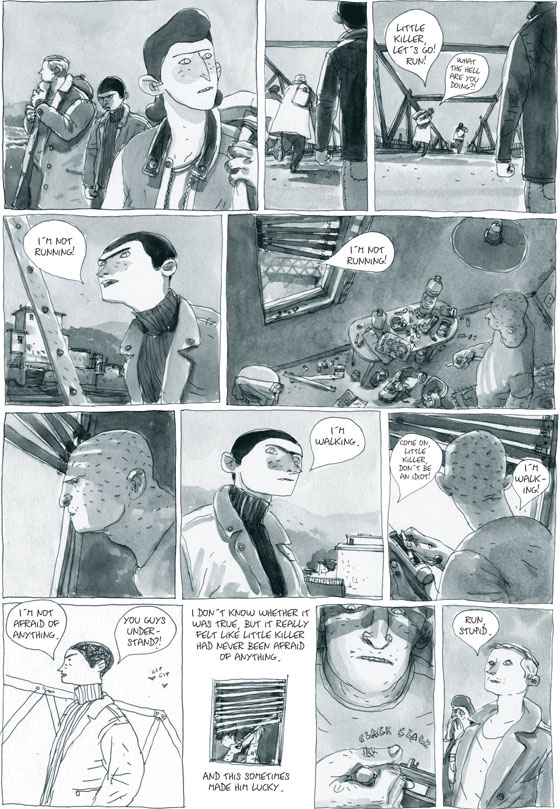Revised post from "Week Seven: The Legitimation of Comics".
This week, I read volumes 1 & 2 of Maus, by Art Spiegelman. Having never read it before, it became clear to me now why it is considered such an important memoir by many. Maus is a digestible, hard-hitting and very real work by a cartoonist who is documenting the tales of his grandfather who was a Jewish prisoner in Auschwitz during WWII. For many, it is sometimes hard to find documents of the war that don't sound so wholly gruesome and unbelievable that it almost seems like a work of fiction. To someone who has never experienced the horrors of war, there can be a disconnect between fictional stories about war and how it actually happened. It can be terribly hard to relate the reality of what happens in war because it's so gruesome that it seems like it can't possibly be fact.
However, Maus does a great job of making the war seem like something real that happened and affected the people involved as well as their posterity. Because it is told from the eyes of the narrator hearing the story retold from his grandfather, it emulates the experience of the war stories seeming like some far-off, unreal thing. At the same time, however, hearing it told from the narrator's grandfather kind of reminds the reader of hearing it from their own grandfather, and can further the relatability of the story.
I think another victory of these comics are the way the characters are represented visually in the book. The characters are different races of animals-- mice, pigs, cats-- representing the ethnicity of the characters. It drives home the point of discrimination and categorization by the Nazis home in a very simple way by doing this. As well as this, by turning the characters into cartoonish animals, it gives the story a level of accessibility that I don't think it would have with human characters, had the animals be specific caricatures of the people they represent. With such little identifying features separating them, the reader is able to project themselves and/or their family into the roles of the characters in Maus. I think this feature helps give the comic the level of accessibility it needs in order to reach such a wide audience, as it did.





